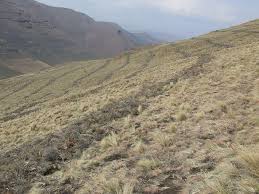Mohloai Mpesi
The government of Lesotho through its Ministry of Tourism, Environment and Culture is on the expedition of refurbishing the old-fashioned environmental Act of 2008, enacting the international Minamata Convention.
This was said by the Director in the Environment department, Bataung Mokhele at the Integrated Catchment Management (ICM) workshop hosted by the Lesotho Highlands Development Authority (LHDA) held at Mohale Lodge last week.
The law which outlines the safety and health of the environment is said to be out-of-date by Mokhele who indicated that they are planning to enact new laws that includes the international multilateral environmental treaty Minamata Convention and Nagoya protocol among others which addresses specific human activities.
He said the law is old as many things changed over time, long after the law was implemented like; Transboundary Conservation which were not included in the Act.
“We have made a Biodiversity Resource Management bill and we are yet to close the gap. We made new treaties like Minamata Convention which is available yet not captured in the Act, we will also get access and benefits of sharing the Nagoya protocol because we want this bill to be perfect,†he said.
“There are some Environmental Management consultancies who control the Environmental Impact Assessment (EIA), they have to be regulated and that needs a principal clause, the reason there is a need to revise this Act,†he continued.
He continued that since many ministries are changing their policies like; Ministry of Forestry as well as the Ministry of Agriculture, their revamped laws have to be supported by the Act since they are all working on the environment.
“The Department of Environment oversees all environmental issues and there is a need to have an Environment Agency or authority. The policy needs to be looked into afresh,†he said.
According to the General Principles of the Environmental Management, it is projected that values assure every person living in Lesotho the fundamental right to a clean and healthy environment.
“To ensure that sustainable development is achieved through the sound management of the environment. To use and conserve the environment and natural resources of the Basotho Nation for the benefit of both present and future generations, taking into account the rate of population growth and the productivity of available resources.â€
The Act further states that it is also mandated to maintain stable and functioning relations between the living and non-living parts of the environment through preserving biological diversity and respecting the principles of optimum sustainable yields in the use of natural resources.
“Reclaim lost ecosystems where possible and reverse the degradation of natural resources. Publish data on environmental quality and natural resources,†the Act read.
“Encourage participation by the people of Lesotho in development of policies, plans and processes for the management of the environment.
“Ensure that waste generation is minimized and safely disposed off. Prevent any interference with climate and adverse disturbances of the atmosphere and take compensatory measures for any unavoidable interference.
“Establish adequate environmental protection standards and monitor changes in environmental quality,†the Act read.
It was further outlined in the workshop that besides the fact that the country doesn’t have enough arable land, there are also no specific and clear laws that govern the environment.
“We don’t have a specific law that is coherent the reason people continue to trample and overstock the rangelands. Repeal the old conflicting clauses of legislation, develop by-laws and the government should work with relevant stakeholders and institutions while the government will also look at how to cross cut through these implications and shortcomings.
“It’s not about lacking laws but implementation and enforcement. We will have a symposium in the first quarter of the year to visit the work that is already going on.
It was advised by the Principal Chief of Thaba-Bosiu, Khoabane Theko that there seems to be lack of knowledge regarding range management matters, hence a need to change the mindset when making the laws.
According to the National University of Lesotho (NUL) Senior Lecture in the Department of Biology Doctor Lerato Seleteng-Kose (PhD), some of the wetlands in wetlands area were found to be degraded, mainly by crop field encroachment, road construction, foot paths, grazing, burrowing or digging by Sloggett’s Ice Rat (lebolileqhoa), which she said is endemic to southern Africa- confined to Lesotho and South Africa as per her research findings on Lesotho wetlands.
“Although wetlands are widespread throughout the country, they are highly concentrated in the central and eastern parts, the highest density and frequency of the wetlands occurs in the highlands, above 2,000 m a.s.l. Their density seems to be increasing with increasing rainfall and altitude,†she said.
“Wetlands are often rich in endemics and rare or threatened because of these unique habitats like Aponogeton ranunculiflorus (Sejo-sa-lihohoana, Sehlabathebe lily) dominant plant families include, Poaceae (grasses) like Merxmuellera (moseha), Festuca (letsiri) Asteraceae such as Helichrysum (Phefo), Cyperaceae (sedges), Cyperus (loli, toane),†she said.
She further indicated that some wetlands in Lesotho are under severe threat as evidenced by the presence of gullies and reduced discharge of water. She said the major threats include encroachment by alien invasive plants, unplanned/ uncontrolled fires, over-exploitation such as over-harvesting and overgrazing. Moreover, she said trampling by livestock Cultivation, construction activities like mining, soil erosion, Habitat loss/fragmentation, Climate change like drought.
She continued that, “At least eight invasive alien plant species have been reported to occur in the country’s wetlands, including Paspalum dilatatum (bohloa), Hypochaeris radicata, Cirsium vulgare (hlabahlabane), Cyperus esculentus (toane) and Pennisetum clandestinum (mohloa-tsepe),†she said.




